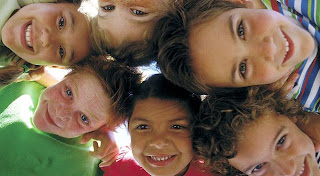
for eating disorders in kids under the age of 12. Other research suggests that 5% to 10% of all
eating disorders occur in boys. “We still see kids that are the stereotype— teenage girls who come from more affluent, educated backgrounds,” Rosen says. “But now we’re seeing boys, kids of color, and kids as young as 8, 9, and 10 who are showing up with very serious
anorexia nervosa.” As early as 1991, studies noted a shift in kids’ thinking.
Researchers reported that 42% of first- to third-grade girls polled wanted to be thinner, and 81% of 10-year-old girls were afraid of being fat.
Some children with eating disorders may not look underweight, Rosen explains, because they started eating disordered behaviors when they weighed more or their behavior hasn’t directly resulted in weight loss. But his study points out that failure to grow and gain is a problem for developing children;they should gain weight on a consistent basis.
Weighing 15% less than one’s ideal body weight (relative to height) is generally the measurable criterion for anorexia nervosa. However, Rosen’s study indicates that children who don’t meet this markercan still be in trouble because they experience fear of eating, perhaps fear of gaining weight, andconcerns about their body—issues that loom large in a little person’s mind.
“Some kids are concerned about choking, and others fear they are overweight,” says Rosen. “Somekids get very hung up on the fat content of food because their grandpa had a heart attack and somewhere they picked up the information that heart attacks are caused by eating too much fat and having bad cholesterol. There are a lot of different issues.”
According to Rosen, some kids may process messages about obesity in ways that adults hadn’t anticipated. He encourages parents who suspect a problem to have their children screened by a pediatrician and possibly assessed by a psychologist, adding that sometimes a disorder can be hard for family members to identify in young children.
Experts agree that elementary school-aged kids may not be able to verbalize many of their feelings, but indications of sadness and worry could be red flags regarding an eating disorder.
Naturally, parents wonder if they are partly to blame. “The top question I get from parents is,
‘What did I do wrong?’” says Johanna S. Kandel, founder of The Alliance for Eating Disorders
Awareness and author of Life Beyond Your Eating Disorder: Reclaim Yourself, Regain Your Health, Recover for Good. “Eating disorders are like a perfect storm where so many factors come together.
“Letting go of everything you think you know about eating disorders is a good first step to gaining understanding,” says Kandel, who believes strongly in research linking a genetic predisposition to anorexia and bulimia. “I always say genes load the gun, and the environment and situation pull the trigger, so parents shouldn’t blame themselves but instead realize they can have a tremendous positive influence by encouraging healthy eating at home.”
There is power in parents modeling healthy attitudes toward food, she explains, noting that it helps to refrain from using food as a reward and to avoid classifying foods as good or bad. It’s also helpful to encourage a relaxed attitude at mealtime instead of engaging in a power struggle with a child.
“There are many ways to treat eating disorders in children, and not all treatment methods are equally effective,” says Sarah K. Ravin, PhD, a psychologist who specializes in treating children struggling with eating disorders. “Research shows that family-based treatment, also known as the Maudsley Method, is the most effective type of treatment for children under 18 who suffer from anorexia or bulimia.” Ravin says it’s also helpful for parents to arm themselves with accurate, up-to-date information.
“I recommend a nonprofit organization called FEAST [Families Empowered and Supporting Treatment for Eating Disorders
— Michele Deppe












Yorumlar
Yorum Gönder